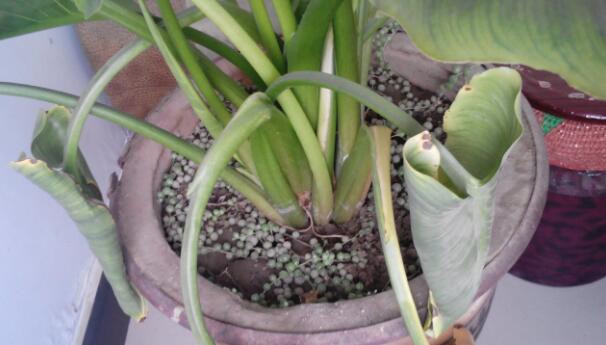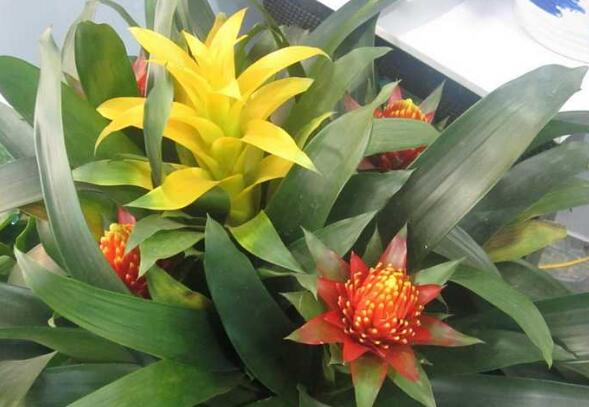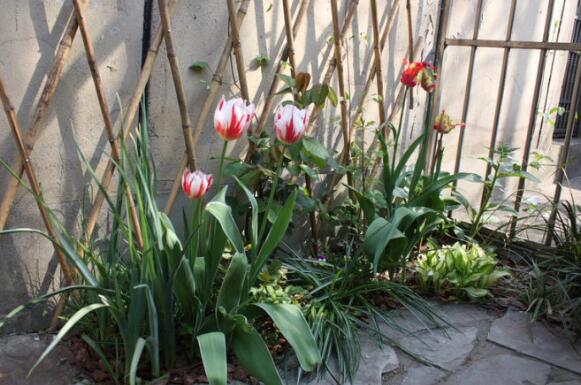How to deal with calla lilies growing insects, calla lotus diseases and insect pests control / 3 insect pests and 3 diseases
Calla lilies, a kind of flowers with beautiful meaning and beautiful colors, are the favorite of modern people. However, due to improper maintenance, many people raise calla lilies will have a variety of problems, such as being attacked by insects, then how to deal with calla lilies? In fact, it is very simple, which kind of bug is encountered, and then solve the problem. The following is the pest control of calla lilies. Follow the editor to have a look.
First, how to deal with the calla lily worm, spray and kill it.

Horseshoe lotus has a long flowering period and is a highly ornamental flower, so once it is infested by insects, it will seriously affect its beauty. As for how to deal with calla lilies, in fact, it is not difficult, we just need to carefully find out which kind of bug, and then solve it.
(1) three major insect pests of calla lilies
When calla lilies are kept at home, what they fear most is the growth of worms. Good flowers turn into withered branches and leaves, which is really a headache. It is understood that there are mainly three kinds of insect pests of calla lilies: shell insects, two-point leaf mites and species flies. The specific symptoms and solutions are as follows:
1. Scale insects
Scale insect, one of the main pests of calla lilies, mainly harms the leaves of pineapple flowers, which yellowing, withering and even falling. What if the calla lily leaves turn yellow? I've already introduced it before, but I won't say much here.
Solution: when you find the above symptoms and confirm that they are scale insects, flower friends should solve them immediately. A small amount of shell insects can be scraped off directly. When there are a large number of scale insects, 50% of parathion can be used for spray killing.
2. Tetranychus urticae
The insect, also known as cotton red spider, is also one of the common pests of calla lilies. It usually absorbs leaf juice on the back of calla lilies leaves. When attacked by two-point spider mites, the light leaves turn red, such as fire, heavy leaves fall.
Solution: when the pest is found, the diseased leaves should be removed and treated centrally; it can also be solved by spraying 1000 times of dicofol or 2000 times of dicofol.
3. Seed fly
One of the main pests of calla lilies, it is also a kind of maggot that erodes the seedlings during the larval stage, causing it to rot and die. Once entangled by this bug, the consequences are very serious.
Solution: when the pest occurs, it can be sprayed with some insecticidal powder, or its soil and seeds can be treated with chemicals as soon as they are ready to be planted.
(2) four major diseases of calla lilies
Calla lilies grow worms how to deal with, read the above content we should know how to do it! However, in addition to being attacked by insects, the disease is also harmful to calla lilies all the time, and there are three main diseases of calla lilies: grey mold, soft rot and leaf spot. The specific symptoms and solutions are as follows:
1. Grey mold
The disease is one of the diseases of calla, which mainly harms the leaves, pedicels and flowers of calla. Symptoms: the leaves will produce yellow-green to dark green water-like plaques, gradually expand, when wet soft rot, the affected part of the gray, khaki mildew layer.
Solution: when the disease is found, the diseased leaves in the toilet should be removed in time to avoid contact with infection. If necessary, 50% carbendazim 500 times or 75% chlorothalonil 500 times can be sprayed, and it can be basically solved after a few times.
2. Soft rot
When suffering from the disease, calla lilies near the surface will occur soft rot detachment, root rot, the whole plant suddenly wilted and died. If the leaf is sick, it will become soft and wet rot; when the pedicel is damaged: the flower turns brown, the pedicel soft rot falls off, bacterial disease.
Solution: when it is found that the disease is affected, flower friends should remove the diseased bulbs and disinfect the soil with 40% formaldehyde around the diseased plant.
3. Leaf spot
Leaf spot, one of the diseases of calla, often occurs in the process of growth. Symptoms: small lesions on the leaves, nearly round, gray, and gradually expanding in combination with irregular large rotten spots, sometimes opposing flowers and pedicels.
Solution: when the disease is found, flower friends should remove the residue of diseased leaves in time to avoid too much water. In severe cases, use 1000-1500 times of emulsified oil, or 80% Dasheng 500 times, spray 25% 2-3 times every 7-15 days.
How to deal with the growing insects of Dahlia, the control of diseases and insect pests of Dahlia / 3 insect pests and 2 diseases
Dahlia is a kind of plant with high ornamental value, which can be seen in many gardens in our country. However, high ornamental plants will also wilt if there are diseases and insect pests. How to deal with the growing insects of Dahlia, and how to control the diseases and insect pests of Dahlia? Next, the editor will take you to learn about it.
1. How to deal with Dahlia worms / drug treatment
On how to deal with the problem of dahlia growing insects, first of all, you have to understand what diseases and insect pests appear, to find the cause can be targeted treatment, the most effective way is that we can choose agents for prevention and control.
II. Disease and pest control of Dahlia
1. Dahlia borer moth pest
Dahlia borer moth is the most common one in the pest control of Dahlia. the high incidence period of this pest is from August to September every year, so we must pay special attention to it at this time. This kind of pest mainly harms the stem of Dahlia and will gradually nibble away the sap of the stem, which will lead to the death of the plant if it does not come out for a long time.
Control method: this pest is the best to deal with in infancy, we can choose 50% fenitrothion emulsion 1000-1500 times to spray and control the plant as a whole.
two。 Heart-eating pest
The high incidence period of this pest is about May to June every year, which mainly harms the young leaves and hearts of dahlias, and gradually bites them, resulting in the phenomenon of plant wilting.
Control methods: when this kind of pest occurs, we must deal with it in time. We can choose to spray the plant with 1500 times of crackle parathion, usually once every 7-10 days, and we can basically eliminate this pest after 1-2 times.
3. Aphid pest
There are many plants harmed by aphids, and Dahlia is one of them. The size of this pest is very small, most of which are only about 2mm. It is difficult to detect with the naked eye and can only be judged by symptoms. This pest mainly feeds on the sap in the stem of the plant, which leads to the loss of nutrients and death of the plant.
Control methods: the emergence of this kind of pest is best to be controlled at the initial stage, if it takes a long time, it may lead to no cure. For this pest, we can use 1000 times of 50% fenitrothion emulsion to spray.
4. Root nodule disease
As the name implies, the disease mainly harms the roots of dahlias. At the beginning of the disease, a white tuberous object appears in the roots, which gradually increases in volume with the passage of the event, and finally causes the plant to wither.
Prevention and treatment: in the initial stage of finding this disease, we should remove the disease tumor in time, and then use 00 times copper sulfate solution to disinfect the wound, which can basically eliminate the disease.
5. Brown spot disease
Brown spot is a kind of fungal disease, which occurs in the growth process of many plants. This disease mainly harms the leaves of Dahlia. At the initial stage, some dark spots will appear on the leaves, which will spread gradually with the passage of the event. Finally, the leaves continue to fall off, resulting in death.
Control methods: when this disease occurs, we should spray 0.2 ~ 0.3 °be stone sulfur mixture on Dahlia in time, usually once every 7-15 days, and the disease can be thoroughly understood after 2-3 times.
How to deal with the long insects of Gladiolus, disease and pest control of Gladiolus / 3 diseases and 1 pest
The reason why gladiolus is popular is related to the high ornamental value of its flowers, but when planting it, flower friends will cause gladiolus plants to grow insects because of improper maintenance, resulting in yellowing leaves, fewer flowers, and serious death of the whole plant, so we have to find ways to avoid this situation, so how to deal with gladiolus worms? Let's take a look at the prevention and control methods of diseases and insect pests in Gladiolus.
How to deal with the gladiolus long worm
Thrips: this is the most common pest on the gladiolus plant. It usually goes out during the day and hides in the axils of the leaves. When the light is weak at night or on cloudy and rainy days, it will come out to harm the leaves and feed on the leaves, roots and flowers. When the leaves change from green to yellow, there will be white-gray spots on the Corolla, and the petals will eventually curl.
Prevention and control methods: the prevention and control of thrips need to pay attention to the fertilization in the breeding methods of gladiolus, apply more phosphorus and potassium fertilizer to improve disease resistance, and spray 1000 times of dimethoate EC when the disease occurs.
Control methods of diseases and insect pests of Gladiolus
1. Mosaic disease
The affected parts are mainly leaves and flowers. At first, there will be round spots or corner spots on the leaves, then expand into polygons, the color becomes brown, the leaves will be yellow and curled after the disease, the plant will become short, the spikes will become shorter, and the flowers will not be in full bloom.
Prevention and treatment: when planting, you should choose a strong corm that does not contain virus, and you can disinfect it with potassium permanganate solution. Remove the diseased corms in time after the onset of the disease, and then spray the leaves with 58% mancozeb wettable powder 500 times or 75% chlorothalonil wettable powder.
2. Leaf spot
Although the main harmful part is the leaf, but if it is not treated in time, it will infect the bulb, and the leaf spot will lead to brown spots on the leaf surface of Gladiolus, the markings will continue to expand, the color will continue to deepen, and finally the whole leaf will wither. how the corm is infected will affect the reproduction and growth of Gladiolus.
Control methods: like mosaic disease, in the prevention and control of diseases and insect pests of Gladiolus, the prevention means of leaf spot disease is to choose excellent varieties without pathogens to plant. After the outbreak of the disease, the medicament used is 75% chlorothalonil 800 times liquid, or 65% Dysen zinc solution.
3. Fusarium wilt
It mainly harms the corm of Gladiolus, which will infect the whole plant in the later stage. At the initial stage of the disease, small reddish-brown spots will appear on the bulb, and then continue to expand, depression and atrophy, resulting in corm rot and white filamentous bodies. In serious cases, the plant grows poorly, and the flowers will be deformed.
Prevention and control methods: when breeding, the seed ball had better be soaked in formalin solution for 2 hours, then washed with 40 degrees warm water and dried in a cool place for cold storage, and the sown goods also need to be disinfected again. For example, soaking in 500 times carbendazim solution can prevent the occurrence of Fusarium wilt.
- Prev

What about the insects growing in the pineapple flower? pest control of the pineapple flower / 3 insect pests and 3 diseases
The beauty of pineapple is reflected in the flower. After all, it only blossoms once a year. But because some flower friends maintain improperly, pineapple flowers will be infested by insects, resulting in a decline in ornamental, then how to grow bugs in pineapple flowers? In fact, there is no need to panic, we just need to find out what kind of pest it is, and then solve the problem.
- Next

How to deal with tulips with worms, pest control of tulips / cigarette soap
Tulip, a noble and beautiful flower, is not only the national flower of the Netherlands, but also loved by flower friends all over the world. However, because of improper maintenance, many people's tulips will be invaded by diseases and insect pests. How to deal with tulips with worms? In fact, it is very simple to find out what kind of diseases and insect pests it is, and then solve the problem.
Related
- Fuxing push coffee new agricultural production and marketing class: lack of small-scale processing plants
- Jujube rice field leisure farm deep ploughing Yilan for five years to create a space for organic food and play
- Nongyu Farm-A trial of organic papaya for brave women with advanced technology
- Four points for attention in the prevention and control of diseases and insect pests of edible fungi
- How to add nutrient solution to Edible Fungi
- Is there any good way to control edible fungus mites?
- Open Inoculation Technology of Edible Fungi
- Is there any clever way to use fertilizer for edible fungus in winter?
- What agents are used to kill the pathogens of edible fungi in the mushroom shed?
- Rapid drying of Edible Fungi

